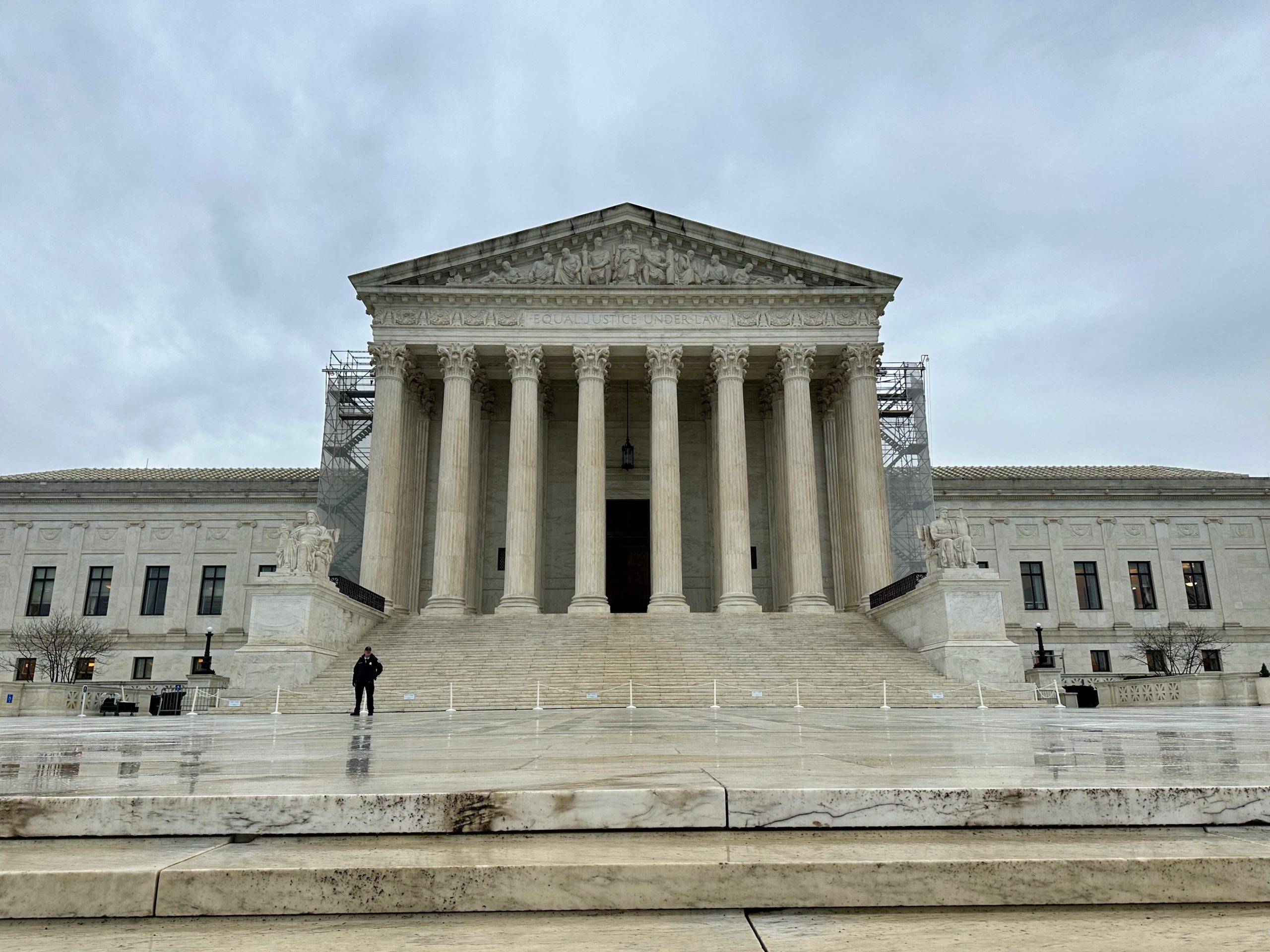Supreme Court split over bump-stock ban


The Supreme Court on Wednesday was divided over the validity of a 2018 federal regulation banning the “bump stock” rifle attachment. The Trump administration regulation barred ownership of bump stocks, which transforms a semiautomatic rifle into a weapon that can discharge at a rate of hundreds of rounds per minute, under an existing general prohibition of machine guns. Although some of the court’s conservative justices expressed concern that the regulation could subject the owners of bump stocks to criminal liability even though the devices were legal when they purchased them, several justices also contended that the lethal capacity of semiautomatic rifles fitted with bump stocks was precisely the kind of weapon that Congress intended to target.
A firearm with a manual action requires the shooter to eject an empty cartridge after firing and load a new one before firing again. A semiautomatic firearm automatically loads a new cartridge after firing, but the shooter must pull the trigger each time he wants to fire a shot. A machine gun, by contrast, will automatically reload new ammunition and continue to fire as long as the shooter keeps his finger on the trigger.
Until 2018, the Bureau of Alcohol, Tobacco, Firearms, and Explosives had indicated that only certain kinds of bump stocks transform semiautomatic rifles into machine guns. But in the wake of a 2017 mass shooting at a music festival in Las Vegas in which a single shooter killed 60 people and injured 500 more, the ATF issued a rule concluding that bump stocks are machine guns. Under the 2018 rule, anyone who owned or possessed a bump stock was required either to destroy them or turn them over to the ATF to avoid criminal penalties.
Michael Cargill, the owner of a Texas gun store, surrendered his bump stocks but also went to federal court, seeking to have the rule thrown out.
The U.S. Court of Appeals for the 5th Circuit agreed with Cargill that the federal law defining “machinegun” does not apply to bump stocks because semiautomatic rifles equipped with bump stocks do not shoot multiple bullets “automatically” or “by a single function of the trigger,” as the law requires. But in any event, the court of appeals held, the rule of lenity – a doctrine that instructs courts to apply ambiguous criminal laws in the way that is most favorable to defendants – also weighs in favor of excluding bump stocks from the definition of machine gun.
The Biden administration came to the Supreme Court, which agreed last year to weigh in.
At Wednesday’s oral argument, the justices spent a substantial amount of time delving into the highly technical mechanics of firearms. Justice Clarence Thomas, for example, pressed Deputy U.S. Solicitor General Brian Fletcher, representing the Biden administration, on how a semiautomatic rifle equipped with a bump stock operates differently from a machine gun.
Fletcher emphasized to fire a machinegun such as an M16, an automatic rifle commonly used by the U.S. military, a shooter would press the trigger back and hold it. To fire a rifle equipped with a bump stock, he explained, the shooter would push the rifle forward, which both “initiates and continues the firing.” That is a “single function of the trigger,” Fletcher contended, because the shooter only takes one action – pushing the rifle forward.
Representing Cargill, Jonathan Mitchell countered that – unlike machine guns – a rifle equipped with a bump stock “can fire only one shot per function of the trigger” because the trigger, which initiates the firing of a gun, resets with every shot. And a “function of the trigger” does not occur “automatically,” he insisted, because “the shooter must continually and repeatedly thrust the force stock of the rifle forward with his non-shooting hand while simultaneously maintaining backward pressure on the weapon with his shooting hand.”
Chief Justice John Roberts pressed Mitchell on exactly what action the shooter takes. Although Mitchell, Roberts observed, characterized the shooter as “thrusting” the rifle forward with his non-shooting hand, Fletcher described it in terms of “maintaining pressure.”
Justice Elena Kagan intervened, suggesting that the shooter doesn’t actively “make sure that the hand is moving back and forth” but instead “just makes sure that he is pushing forward.”
Mitchell conceded that Kagan was “probably right” but stressed that even if the shooter is simply applying “constant pressure with the same amount of force,” he is still acting manually, rather than automatically, as the statute requires.
However, the justices also focused on broader and less technical issues, such as the effect that the 2018 rule could have on bump-stock owners who purchased the devices when they were legal. Justice Neil Gorsuch was the first to flag this concern. He told Fletcher that he could “certainly understand why these items should be made illegal,” but he observed that before 2018 the ATF had repeatedly indicated that bump stocks are not machine guns. As a result of the agency’s about-face in 2018, Gorsuch complained, somewhere between 250,000 and 500,000 people could be convicted of felonies, which could lead not only to jail time but also the loss of other civil rights, including the right to vote.
Fletcher pushed back, responding that in the wake of the Las Vegas shooting it “would have been irresponsible for the ATF not to” revisit its earlier interpretation of the definition of machine gun, and to revise it if it concluded that it was incorrect.
Justice Brett Kavanaugh picked up on Gorsuch’s questions a few minutes later. Could someone be convicted, he asked, even if he wasn’t aware that bump stocks are now prohibited? When Fletcher’s answer was yes, Kavanaugh shot back, “That’s going to ensnare a lot of people.”
Justice Samuel Alito worried aloud about bump-stock owners who had the devices between the 2018 rule and the decision by the 5th Circuit holding that the rule is invalid. Alito characterized Fletcher’s response – that they too could be held criminally liable – as “disturbing.”
But if some justices were concerned about bump-stock owners, several other justices suggested that, with the ability to fire at a rate of hundreds of rounds per minute, semiautomatic rifles equipped with bump stocks were precisely the kind of weapons that Congress intended to capture within the definition of “machine gun.”
Thomas, for example, noted that the ban on most machine guns was originally enacted during Prohibition in response to “significant damage from machineguns, carnage, people dying, et cetera.” The government, he told Mitchell, is arguing that “the bump stock does the exact same thing. So with that background, why shouldn’t we look at a broader definition of” what it means for something to be a “single function of the trigger”?
Justice Ketanji Brown Jackson similarly posited that the category of firearms prohibited by the ban on machine guns was based on “the high rate of fire as opposed to … the movement of the trigger.” But if you are correct, she said to Mitchell, “why would Congress want to prohibit certain things based on whether the trigger is moving as opposed to certain things that can achieve this … lethal kind of spray of bullets?”
Kagan was perhaps the strongest proponent of this argument. She acknowledged that courts should interpret statutes by “reading them” – an approach known as textualism. But, she told Mitchell, “textualism is not inconsistent with common sense.” And common sense, she said, leads to the conclusion that the statute is intended to cover “a weapon that fires a multitude of shots with a single human action. Whether it’s a continuous pressure on a conventional machinegun, holding the trigger, or a continuous pressure on one of these devices on the barrel, I can’t understand how anybody could think that those two things should be treated differently.”
A decision in the case is expected by summer.
This article was originally published at Howe on the Court.
Posted in Merits Cases
Cases: Garland v. Cargill